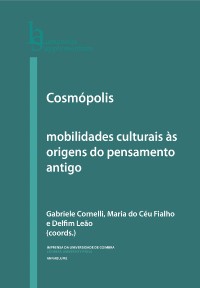Please use this identifier to cite or link to this item:
https://hdl.handle.net/10316.2/40875| Title: | Deslocações divinas em territórios humanos: a arte de enfeitiçar de Natália Correia | Other Titles: | Divine displacements in human territories: Natália Correia’s art of charming bewitching | Authors: | Pina, Maria da Graça Gomes de | Keywords: | Natália Correia;Circe’s Island;laughter;passion;Natália Correia;A ilha de Circe;riso;paixão | Issue Date: | 2016 | Publisher: | Imprensa da Universidade de Coimbra Annablume |
Journal: | http://hdl.handle.net/10316.2/40836 | Abstract: | A decade before her death, for a brief period, Natália Correia decides to
take shelter in the novel genre (without, however, neglecting poetry) and publishes in
1983 a short volume entitled Circe’s Island. The last story, which bears the same title
as the volume, is a deconstruction of Homer’s narrative of Circe, a character known
by her spelling power. The author’s re-appropriation of this Greek mythological
character and of the locus where the action is played out is, according to her words,
a mixture of «laughter» and «passion». These two feelings, around which the entire
plot is constructed, represent the way in which Natália Correia revisits classicism and
brings it to another land, closer to us and surely less mythological, where magic and
the art of spelling acquire fully human features, but where the fantastical features
of the witch Circe are also present. It is therefore my aim to analyse the narrative
process according to which the feelings of laughter and passion are interweaved with
the magic of the narrative, offering to the reader a modern vision of the classical
world, allowing the return to that very world under the guidance of Natália Correia. Uma década antes da sua morte, Natália Correia decide refugiar-se por breve tempo na novelística (sem todavia abandonar a poesia) e publica em 1983 um pequeno volume intitulado A ilha de Circe. A última das novelas, homónima à coletânea, é uma desconstrução, à maneira nataliana, da narração odisseica de Circe, personagem homérica conhecida pelo seu poder enfeitiçador. A reutilização que a Autora faz dessa figura mitológica grega e do locus onde decorre a ação é, segundo as suas palavras, uma mistura de «riso» e de «paixão». Estes dois sentimentos, perno sobre o qual girará toda a ação, representam o modo pelo qual Natália Correia revisita o classicismo e o transplanta para outro terreno, mais próximo da nossa era e decerto um pouco menos mitológico, em que a magia e a arte de enfeitiçar ganham conotações, diria, plenamente humanas, mas onde não deixam de estar presentes também as características fantásticas da maga Circe. Com este contributo, proponho-me portanto analisar o processo narrativo segundo qual os sentimentos de riso e de paixão se entrelaçam com a magia da narração, oferecendo ao leitor uma visão do mundo clássico moderna, proporcionando-lhe e permitindo-lhe um regresso a esse mesmo mundo, sob a guia do cicerone Natália Correia. |
URI: | https://hdl.handle.net/10316.2/40875 | ISBN: | 978-989-26-1287-4 978-989-26-1288-1 (PDF) |
DOI: | 10.14195/978-989-26-1288-1_15 | Rights: | open access |
| Appears in Collections: | Cosmópolis: mobilidades culturais às origens do pensamento antigo |
Files in This Item:
| File | Description | Size | Format | |
|---|---|---|---|---|
| deslocacoes_divinas_em_territorios_humanos.pdf | 180.11 kB | Adobe PDF |  |
Items in DSpace are protected by copyright, with all rights reserved, unless otherwise indicated.
